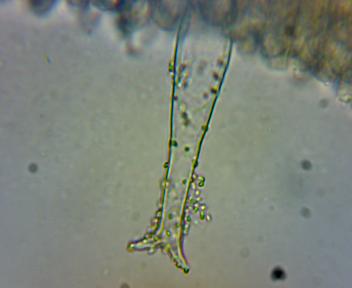Slime Mold
 Tue 2013-12-31
Tue 2013-12-31 A dark red slime mould, probably Arcyria denudata. Arcyria incarnata is similar but the sporangia are much fuzzier when they have burst.
I took a specimen home with me:
Under the microscope the spores are about 6 x 5.5um (magnification x600, field width 86um):
The capillitium is rough and thick and has loops (also magnification x600, field width 86um):
First photo and specimen taken in Whiteknights Park, Reading, UK, on 2013-12-24.



